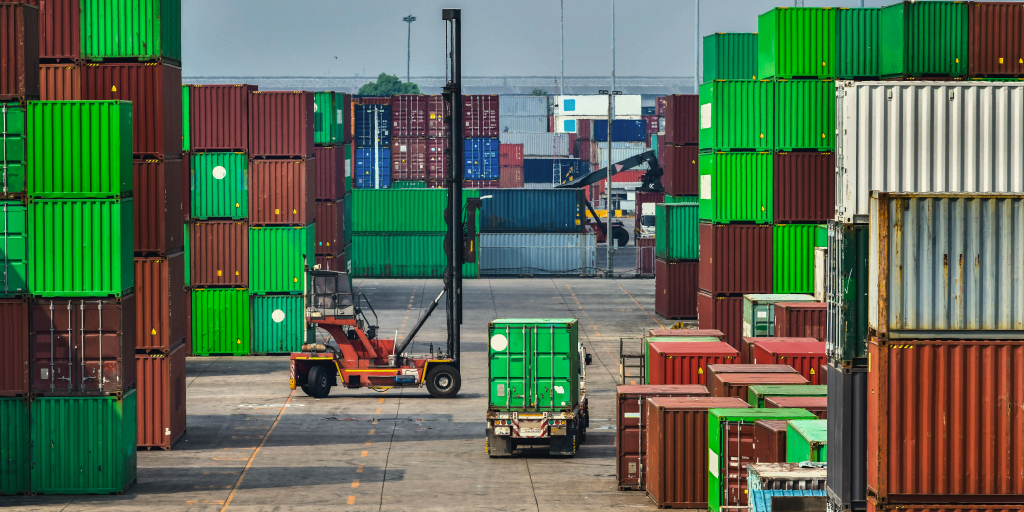Selling into the EU has gotten more challenging for businesses that aren’t established in one of the member states.
Aside from requiring all economic operators to only place safe products on the Union’s markets in accordance with relevant European standards, the GPSR also makes it mandatory for businesses to have a stable physical and legal presence in an EU country.
Consequently, all economic operators offering consumer products on one or more EU marketplaces must be established in one of the EU member states or appoint a responsible person to vouch for the safety of those products.
However, the responsibilities of manufacturers, importers, and distributors under the General Product Safety Regulation vary, making it challenging for businesses to determine the requirements they must meet before placing a product on an online or offline market in Europe.
In this article, we’ll help you understand the nuanced differences between different economic operators and determine your responsibilities under the GPSR.
Operating on EU’s marketplaces after the GPSR

Placing products on the Union’s marketplaces has become more complex after the GPSR was enacted in December 2024.
This is due to the requirement that all economic operators must be established in one of the member states or appoint an EU Responsible Person to serve as a point of contact for the consumers and market surveillance authorities regarding the safety of the products.
Moreover, even sellers who offer their products through on online marketplaces like eBay or Amazon must ensure that a Responsible Person is available for each product to avoid account suspensions, fines, and other penalties.
Furthermore, regardless of their position in the supply chain, all economic operators must work toward increasing consumer protection by ensuring that their products have the necessary documentation proving compliance with the EU’s product safety regulations.
On the other hand, the responsibilities of economic operators under the GPSR depend on their position in the supply chain, so the steps businesses must take before placing a product on the market in the EU depend on whether they’re considered a manufacturer, importer, or distributor.

Get our free ebook to learn more about the GPSR and its impact on the digital marketplaces in the EU.
Types of economic operators
Article 3 of the GPSR document offers the following definition of an economic operator:
‘Economic operator means the manufacturer, the authorized representative, the importer, the distributor, the fulfillment service provider, or any other natural or legal person who is subject to obligations in relation to the manufacture of products or making them available on the market in accordance with this Regulation.’
In other words, anyone involved in producing, importing, or distributing products available on EU marketplaces is considered an economic operator.
It’s also worth noting that sellers on online marketplaces fall within this definition of an economic operator, and consequently, they must meet their respective compliance obligations.
Let’s look at the differences between different types of economic operators.
The manufacturer

The new product safety regulation indicates that the manufacturer can be:
‘…any natural or legal person who manufactures a product or has a product designed or manufactured, and markets that product under that person’s name or trademark.’
Manufacturers established in the EU can act as the EU Responsible Person for their products. On the other hand, manufacturers from outside the EU must appoint an authorized representative in order to continue selling their products on European markets.
The importer
The GPSR defines an importer as:
‘…any natural or legal person established within the Union who places a product from a third country on the Union market.’
This definition indicates that an importer is an economic operator established in the EU who purchases products from non-EU countries and brings them to the Union’s markets. It doesn’t affect companies from one EU member state that purchase goods or services from another EU country.
As a result, the importer can almost always act as an EU Responsible Person if the product’s manufacturer hasn’t provided one.
The distributor
A broad definition indicates that a distributor can be:
‘any natural or legal person in the supply chain, other than the manufacturer or the importer, who makes a product available on the market.’
Hence, sellers who don’t offer products they produce to consumers in the EU are considered distributors under the GPSR.
An authorized representative
Businesses outside the EU cannot offer the products they manufacture or distribute on the Union’s markets unless they appoint a representative established in one of the EU member states.
The GPSR provides the following definition of the authorized representative:
‘…any natural or legal person established within the Union who has received a written mandate from a manufacturer to act on that manufacturer’s behalf in relation to specified tasks with regard to the manufacturer’s obligations under this Regulation.’
Consequently, the authorized representative is a responsible economic operator, and as such, it can assume various obligations regarding compliance with product safety regulation.
The responsibilities of manufacturers, importers, and distributors
The responsibilities of different economic operators vary depending on their position in the supply chain.
Here’s a quick overview of the responsibilities the GPSR places on manufacturers, importers, and distributors.
Responsibilities of manufacturers
The GPSR places a considerable amount of legal obligations on manufacturers.
Under the regulation, the entity that produces a product is responsible for ensuring its safety through rigorous testing, preparing technical documentation users can easily understand, and appointing an EU Responsible Person.
Let’s go through the obligations of manufacturers within the scope of the GPSR:
- Ensure a product’s compliance with relevant European and international product safety standards.
- Conduct an internal risk analysis.
- Draft the technical documents containing all relevant information, including the assessment of the potential risks it can pose to consumers.
- Translating the technical documents into the EU market’s local language.
- Actively participate in addressing the incidents caused by their products, taking corrective measures to mitigate risks a product poses, and recalling them from the market.
- Informing the market surveillance authorities, importers, and distributors about the accidents or other safety issues they’ve identified regarding their products.
- Providing their contact information to consumers and market surveillance authorities.
- Inform consumers about product recalls.
- Cooperation with different national authorities on all matters regarding product safety.
Responsibilities of importers
Although they don’t have the same responsibilities as manufacturers, importers must still meet a lengthy list of compliance requirements before making a product available on the market in the EU.
Here’s a brief overview of the key responsibilities importers have under the GPSR:
- Establish internal product safety protocols.
- Check if a product can be considered safe and ensure it has all the necessary accompanying documentation.
- Postpone placing a non-compliant product on the market until that product is brought into compliance.
- Provide contact details on a product, packaging, or an accompanying document.
- Verify that technical documentation, along with the mandatory safety warnings, is available in the market’s local language.
- Maintain compliance with product safety regulations for all products they store or transport.
- Collaborate with market surveillance authorities through the Safety Gate Portal or similar channels to bring products into compliance and remove unsafe products from the market.
Responsibilities of distributors
Product distributors must keep an open line of communication with other participants in the supply chain to ensure that their products meet the EU’s safety requirements and address any safety concerns their customers might have.
These are some of the key responsibilities of distributors:
- Setting up business-wide procedures that guarantee product safety.
- Determining whether the importer or manufacturer has taken the necessary steps to comply with the product safety regulations or has appointed an EU-based responsible person.
- Guaranty of the safety and maintenance of compliance with the GPSR of all products under their care.
- Inform the manufacturer, importer, and the relevant authorities that a product can pose a safety risk to consumers and take corrective action to meet the compliance requirements or remove potentially dangerous products from the market.
- Update the information of all products sold online to include manufacturer details and meet all other GPSR requirements.
- Collaborate with all participants in the supply chain and market surveillance authorities during product recalls.
It’s worth remembering that an importer or a distributor can assume the manufacturer’s responsibilities if they modify a product.
GPSR compliance requirements for manufacturers, importers, and distributors

The actual steps businesses must take to resume their activities or place new products in EU marketplaces depend on several factors, including their position in the supply chain.
For instance, an eBay seller who produces all items in their store must conduct a risk assessment for each item and include the assessment results in the item’s technical documentation.
The seller is also responsible for translating the technical documentation to the market’s local language, appointing an EU Responsible Person for the products, and updating the product listings to include safety information, the EU RP’s contact details, and using the Safety Business Gateway to submit all relevant information to market surveillance authorities.
On the other hand, eBay merchants who only sell products made by other companies should check if each item they add to their stores on eBay’s European marketplaces has the necessary technical files and EU Responsible Person and ensure that their product listings are GPSR compliant.
In either case, consulting a compliance expert is advisable because it will help you understand your obligations and make communication with market surveillance authorities easier.
Meeting GPSR obligations to resume thriving on European marketplaces
The new regulation has made it more challenging for digital merchants to continue operating on EU marketplaces.
However, going the extra mile to meet the GPSR compliance requirements can be worthwhile as Europe’s online marketplaces are expected to continue growing in the next five to ten years.
Understanding the responsibilities of different economic operators is crucial for all businesses, regardless of their position in the supply chain, because it enables them to anticipate potential legal hurdles and know the exact steps they must take to meet compliance requirements.
Webinterpret can assist you with navigating GPSR compliance. Schedule a call to learn more.
About Webinterpret
Webinterpret supports merchants selling on eBay.
Our AI-based solutions enable more effective selling through automated listing localization, advertising, and returns and ensure all products placed on EU markets are GPSR-compliant.
By giving your international customers a full, end-to-end local shopping experience, Webinterpret improves your conversion and helps establish your business globally.






